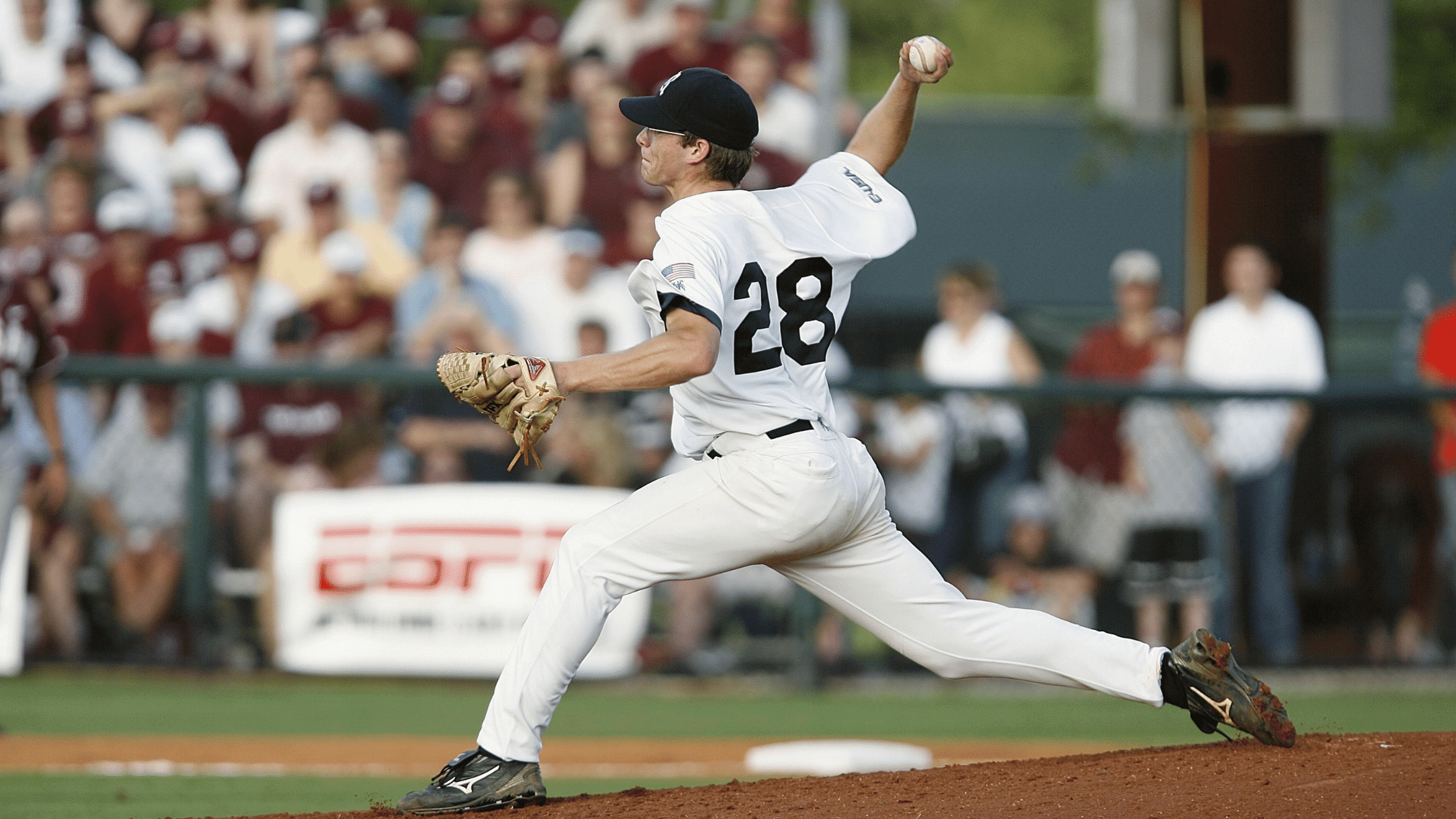Physical Therapy | Personal Training
Why Does My Arm Hurt When I Throw a Baseball? How Physical Therapy Can Help

Licensed Physical Therapist, PT, DPT // Dry Needling Certified // Director, EW Motion Therapy Meadowbrook
Any baseball player knows soreness after practice or a game is typical, especially in your throwing arm. For pitchers, but also for any other player, it is vital to prevent injury and pain by increasing strength and improving mobility to keep your joints and muscles healthy and stable. But why can your arm hurt so much after throwing? How can you reduce pain but still practice as much as you need?
While rest is key to a healthy athlete, there are some things you can do during and outside of practice to help your throwing arm stay strong and ready to perform. Our physical therapists work with athletes who need help improving performance in all areas of their sport. We develop an individualized plan that works with their competition schedule and specific needs. Even if you decide not to work with us, we want to help every baseball player succeed.
This article discusses conditions that can cause arm pain while throwing, how physical therapy can help, and other things you can do at home. With this information, you can go to your next practice or game ready to throw at your best.
What can cause arm pain while throwing?
Any joint in your body can begin to hurt if you overuse it - the same is true for your throwing arm. If you pitch multiple games with hardly any recovery in between, your arm probably will start to get sore over time. On the mound, you put at least three times the average throwing stress on your arm - you need a strong core and proper mechanics to help reduce the stress on your arm, especially your shoulder and elbow. If you do not have the core strength or mechanics in place that you need, you are not able to move as efficiently, which can cause you to “leak” energy as you throw, putting you at a higher risk of injury and decreased performance.
If your pain increases to levels above normal soreness, you could have a different condition, like tendonitis in your elbow or bicep. You could even have a torn rotator cuff. Remember that you should seek medical attention if your pain worsens for more than a week.
How can physical therapy help?
If your doctor sends you to physical therapy, it is always helpful to find a physical therapist who understands the physical demands of baseball, especially on your throwing arm. In your evaluation, your therapist will look at the mobility of your shoulder, trunk, and legs, and address your impairments, whether you struggle with trunk rotation, leg or core strength, or scapular stability. They will also look at your throwing mechanics to see what part of your throw might affect your arm.
In your follow-up sessions, your therapist will do some soft tissue work to ease pain and promote mobility in the arm, shoulder, and upper body. They will also likely emphasize the importance of recovery. It is easy for any athlete to overtrain, especially baseball players, but your recovery plan has to match how rigorous your training plan is. They will then walk you through sport-specific and whole-body exercises, including hip and trunk mobility and strengthening your arm, core, rotator cuff, and lower legs. The main purpose of the exercises is to develop power and endurance, so you can control torque and efficiently transition power from the lower body to your shoulder.
What else can I do to relieve pain?
Now you know more about why your arm may hurt when you throw. Prioritizing mechanics, strength training, and recovery in your practice routine is essential. Still, you should also work during the off-season with a customized throwing program or another kind of off-season conditioning that addresses what you need to improve before next season. Rest is essential for success, but so is coming back next season stronger, faster, and better than you were.
Ice and heat can both be important parts of recovery. Learn more about which one is best for your condition.
Seeking professional help for strengthening and throwing is always a good idea, especially if you can find someone who understands the needs of baseball players or was a player themselves. Our physical therapists at EW Motion Therapy have worked with athletes from many different sports, including baseball, to build customized treatment plans for their needs and help them become the champion they want to be. If you want to learn more about physical therapy, click the button below to download our answers to 20 frequently-asked physical therapy questions.

